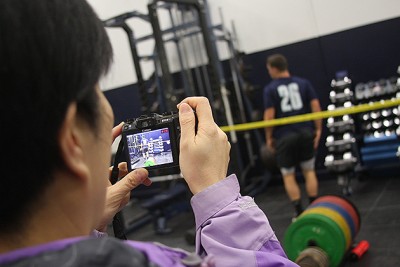
A delegation of top sports and exercise scientists from China visited UConnʼs Department of Kinesiology last month to catch up on the latest in scientific research and training in their field.
The 25 delegates representing Chinaʼs General Administration of Sports attended presentations on sports nutrition, hydration, injury rehabilitation, resistance training, aerobic training, special considerations for the female athlete, and other topics during their six-day visit.
The presentations were conducted by top professors and researchers in the Department of Kinesiology, which is considered the top doctoral program in the country by the National Academy of Kinesiology. The Kinesiology Department is part of the Neag School of Education, which is also home to the top public graduate school of education in the Northeast and East Coast.
“It is a real honor for the University of Connecticut, but more specifically the Department of Kinesiology, to host this delegation representing the General Administration of Sports in China,” says Dr. Carl Maresh, Board of Trustees Distinguished Professor of Kinesiology and head of UConnʼs Kinesiology Department. “The fact that our department was chosen to conduct a comprehensive series of lectures and discussions with these men and women, who are experts in their own right, speaks volumes for the strong international reputation gained through the cutting-edge basic and applied research conducted by our stellar group of faculty over the past 15 years.
“As a result of the professional and personal contacts developed during this time, we expect that important and mutually beneficial research and educational collaborations will develop for both faculty and students,” Maresh added.
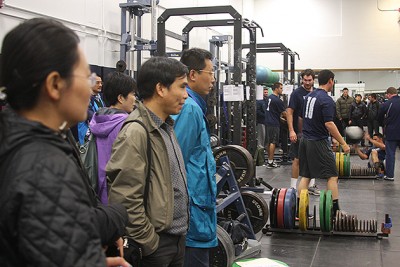
The visitors from China were selected from a much larger group of professionals for the trip through a national competition. The delegation was expected to make brief stops at several other universities during its time in the United States, but its main focus was UConn because of the kinesiology departmentʼs reputation and outstanding programs.
“This visit has been excellent,” said Wenge He, director of the Research Institute of Sports Science in the Hebei Province. “The teachers who lectured were very professional and very prepared. The material they shared with us was very up to date.”
Despite its relatively small size, UConnʼs kinesiology department is home to some of the countryʼs top researchers in sports and exercise science, Maresh says. Having the professors share labs has fostered a strong spirit of collaboration among the faculty, which produces between 30 and 40 research papers a year.
Many members of the Chinese delegation work with Olympians and other elite athletes. The visitors represented provinces throughout China and included a high-ranking government official, Liqiang Liu, deputy director of Chinaʼs Division of Science and Technology Cadres Personnel Department.
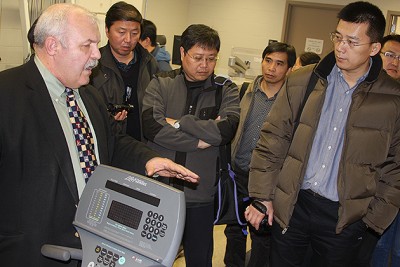
In between lectures, the Chinese delegation toured UConnʼs various athletic training facilities, the kinesiology departmentʼs Human Performance Laboratory, the Universityʼs recreation center, and Gampel Pavilion. The group left Nov. 7, following a luncheon reception with interim Provost Mun Choi and other guests.
“The goal of this trip is to learn the latest information in sports and exercise science to better our athletes,” He said through an interpreter. “We hope to use this trip to network and build collaborations with other scientists in this field.”
Dr. William J. Kraemer, UConn professor of kinesiology, physiology and neurobiology, and medicine, was one of the principal organizers of the visit, after meeting researchers from China at a national strength and conditioning association conference last July.
“These are some of the top professionals in their field in China,” Kraemer said. “We are sharing with them some of the latest sports science information available, and at the same time helping promote UConn on the international scene.”
University of Illinois post-doc Chenyi Ling served as the groupʼs interpreter for the week. UConn graduate student Courtney Dunn-Lewis helped lead the delegation to different events during the visit.
Maresh said parties from both sides are continuing to stay in touch and there may be opportunities for UConn representatives to visit China in the near future and for researchers from the two countries to collaborate down the road.

 Graduates give high grades to the
Graduates give high grades to the 
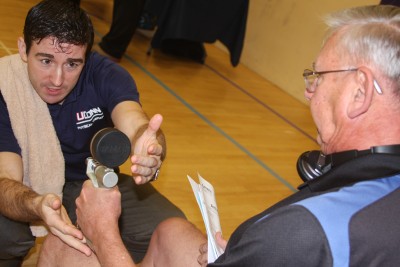
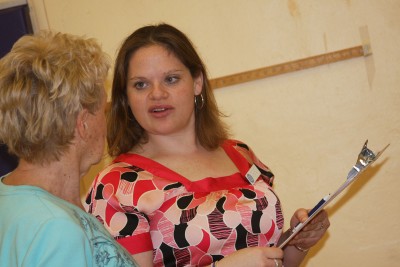
 Neag Alumni Society Scholarship recipient, Lauren Nero, received her bachelor’s degree in education last spring, with a concentration in Secondary English. She’s currently a fifth-year student, working on her master’s degree in education. She recently reflected on the impact of the scholarship from the Neag Alumni Society.
Neag Alumni Society Scholarship recipient, Lauren Nero, received her bachelor’s degree in education last spring, with a concentration in Secondary English. She’s currently a fifth-year student, working on her master’s degree in education. She recently reflected on the impact of the scholarship from the Neag Alumni Society.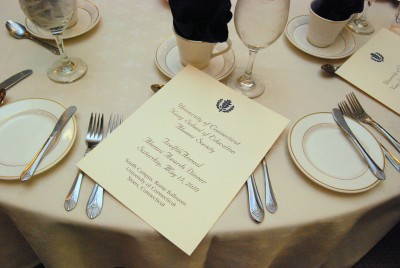 Dear Alumni and Friends of the Neag School of Education:
Dear Alumni and Friends of the Neag School of Education: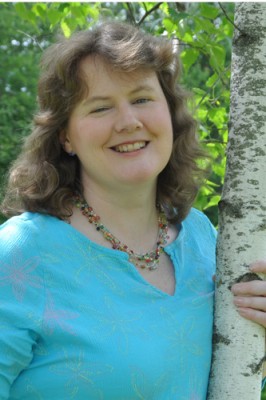
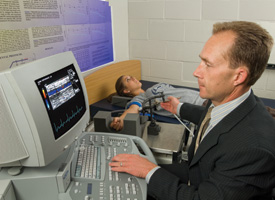 Jeff Volek, associate professor of kinesiology in the
Jeff Volek, associate professor of kinesiology in the 